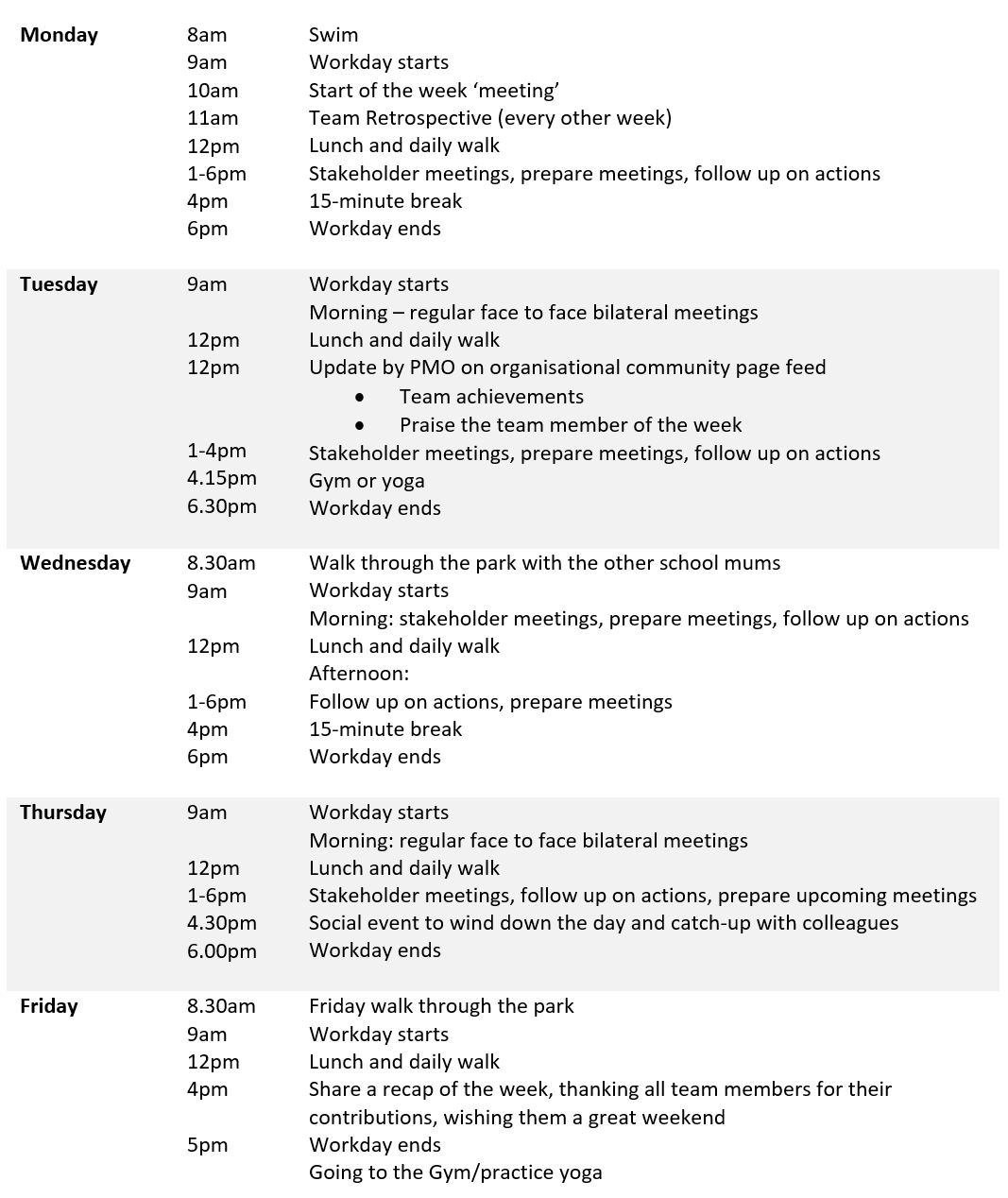How to work better, together in these difficult times
Perspectives / Working Better, Together
How to join forces and help your staff to stay motivated engaged and productive in times of a pandemic
Our shared responsibility to prevent the spread of COVID 19 continues. Mass gatherings are not currently allowed, nor is going to the office. The need to continue to show gratitude and appreciation however remains key. In our previous article we shared insights as to how to create an online event in times of a pandemic, an event that creates a sense of belonging. Whilst this is a good first step, this should not be a one-off.
It is key to ensure that your staff don’t feel disconnected to the company or their team and that they continue to feel appreciated, especially in these challenging times, when there’s a real risk of ending up with a burnout.
Many senior leaders are now asking:
“What can I do to help my staff stay happy, motivated, engaged and productive?”
We have a few suggestions to help team members connect and help you as a leader understand the needs of your staff which as a result will create a sense of belonging to the team and organisation.
The new reality that we are faced with, interacting over Zoom, Teams or Skype, does not create that all-important working bond, however, seeing each other face to face really helps cement relationships.
A few points to consider:
- Hold your bilateral meetings face to face, whilst observing the Covid-19 restrictions. Go for a walk together to catch-up. Did you know that going for a walk is also a great way to improve or maintain your physical and emotional health?
- When talking to each other, as a manager, keep an eye on the positive/negative ratio. Use the moment to encourage, not just to discuss issues and challenges. Put your stress to one side (if there is any). Be aware of what your behaviour does to others. The intention is to influence them positively.

Find out how you can help your team during this time. Identify their most pressing concerns. Ask what your employee needs in order to be able to do his or her job even better. The result is important, but the path for achieving the result is even more important as it influences the way and how quickly a positive result can be achieved.
Examples of questions to ask:
- How did you feel when working last week and why?
- What was your biggest achievement in the past week and what did you learn from it?
- What was the biggest team achievement in the past week and why?
- What should the team stop doing?
- What is going well and should we definitely continue doing?
- What could be improved?
- What should we start doing as a team?
- Which one of your co-workers would you praise this week and why?
- What have you done for yourself this week to stay happy and healthy?
Register the feedback if it relates to the team, appoint action holders and evaluate regularly.

The importance of creating a weekly rhythm
It is important to create a regular routine during the week. When team members can join different fora and share their thoughts on a variety of topics.
Examples could include:
1. Scheduling a ‘weekly start of the week’ 1 hour to 1.5 hour call.
Before you start with the regular agenda in which you reflect on the previous week and discuss coming week do a ‘check-in round’ to understand how people are doing. A sample agenda could be:
Check-in
A ‘check-in’ round, asking on a scale of 1 – 10 how everyone is doing. If they want to share, they can use the opportunity.
This will create an understanding amongst each other, and an opportunity for colleagues to offer help. It could be that someone isn’t feeling well because a close relative just passed away due to Covid-19.
Announcements
– Senior leader presents outputs/key insights from meetings
– Team members birthday’s, or other celebrations
– presenting new joiners
Issues/Concerns
– People share their issues/concern
– An opportunity for the team members to ask and offer help
Achievements/Successes
– Update on positives/wins and achievements
New items
– Chair to present new topics, and assign leads
Focus for the coming week
– People share where their focus will be in the coming week
Any other business / close the meeting – People have the opportunity to ask for help on specific topics
2. Scheduling a weekly social event
Thursday’s seem to work well. Perhaps add some music in the background. No agenda; use is this time to wind down, catch up and ask how everyone is doing.
3. Scheduling a lessons learnt meeting, and use the Start-Stop-Continue mechanism
This is a simple technique that encourages participants to come up with practical ideas for team improvement and actionable items to follow up on immediately.
4. Share successes
- Actively use your companies’ social page. Create a ‘team site’, either in SharePoint or use the companies community tool (e.g. Yammer) on which staff could share their ‘home office’, or introduce them to their cat sitting on top of their keyboard.
- Include a ‘reward’ moment. Ask your colleagues who they think is the ‘team member of the week’ and why. Share this on the companies’ social page

5. Stay healthy together and make sure everyone has downtime
- Block your team members calendar from 12-1pm, and motivate them to have lunch and go for a walk during this timeslot.
- Encourage your staff to interrupt their day during the day with an activity that creates relaxation for them or feels like a reward (e.g. sit on the sofa reading a book while drinking a cup of tea).
- Encourage your team to meet-up to go for a walk together.
- Encourage team members to call each other apart from the business talk.

A week in the life of a manager
Here we have provided a sample of a weekly rhythm that as a leader you could place on your teams’ SharePoint. Especially when working remotely, it’s helpful to be transparent to your team on your whereabouts and availability, managing their expectations, so that they know when to engage with you.
The overview reflects an example of a balanced and healthy work schedule. One that shows as a leader you also take care of yourself. It is important to lead by example.

In summary.
It is important to lead by example. If you lead by example, you will show people that it is accepted in these challenging times for them to take care of themselves. By sharing this it will promote an open and frank discussion as to what really matters.
New Years’ resolutions
Last but not least; Especially now in these challenging times, it’s key to ensure that your team members feel heard and appreciated. Ask your team members to provide feedback on how things were in 2020, and use this input to create the teams’ ‘New Year’ resolutions’. You could use the output of your ‘lessons learnt meetings’ as input for an evaluation. Ask everyone to supplement it with additional topics (as applicable).
These resolutions should not only focus on what to do differently as a team, but should also include your team members’ personal New Years’ resolution. Ask them what you as a leader and your colleagues could do to help them meet their personal goals (e.g. staying healthy and happy during a pandemic.)
”People often set New Years’ resolutions, often though they do not follow through.”
What if you make this a joint goal and try to meet these goals together? Set the resolutions, and discuss together what actions you could take on a regular basis. Discuss these at your social event (however, stay away from an agenda!), agree on a buddy; as you team members may have similar goals. Let 2021 not only be about work, but also about how you and your team can join forces to get through this challenging time together. Add all of this to your teams ‘SharePoint and review during the Lessons Learnt meeting.
These tips will help you to support and encourage your team. Our next article will be on the cause of burnouts in times of a pandemic. How to identify them, to prevent them, and resolve them in your role as a leader.
Interested in digital acceleration?
Subscribe to NextWave for occasional email updates on the latest technology, acceleration approaches, news and NextWave events. You can unsubscribe from these communications at any time.
Subscribe for our latest updates
Tags:

July 15, 2020
